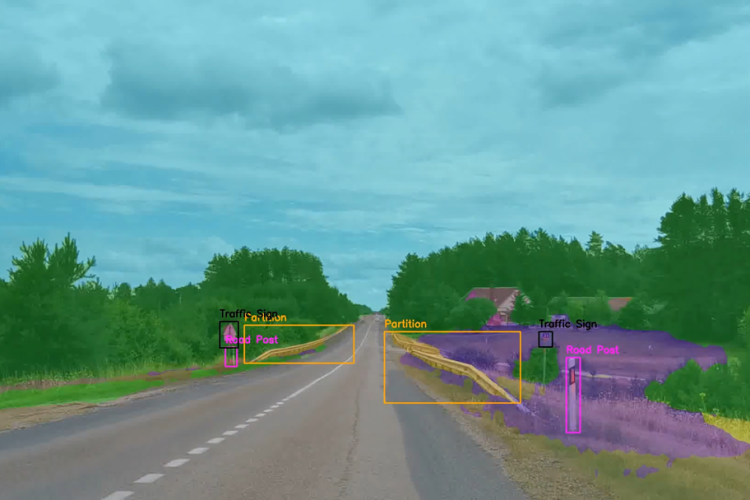The UAVs will replace specialist road vehicles for most tasks.
AB Kelių priežiūra - a state-owned company that maintains more than 21,000km of national roads – has joined forces with technology companies Thrust and Agmis to introduce the AI-powered drone-based system for automated road inspection. The joint project, called GreenBee, aims to improve the quality and scope of road network inspection and also to reduce CO2 emissions created while performing inspection tasks.
Currently road inspections are performed using specialist vehicles that drive slowly, allowing visual inspection of the infrastructure. Depending on the type of the road, these inspections are performed monthly, weekly or sometimes daily. Each year road inspection vehicles travel thousands of kilometres, emitting tonnes of CO2.
With GreenBee road inspection, vehicles will be replaced by UAVs equipped with high-definition cameras and multiple sensors. The drones will fly along the inspection routes and gather data for further analysis. Acquired video and sensor data will be analysed by employing AI and computer vision technologies to identify defects and troublespots.
“By rapidly covering large areas and pinpointing areas of potential defects, UAVs and AI analysis will act as a reconnaissance service,” said AB Keliu prieziura head of quality and technology Jolita Mackiene. “This will allow us to efficiently plan manned inspection routes and to dispatch teams to the areas requiring prompt action.”

Mackiene added that introduction of UAVs will help to reduce the CO2 emission footprint of inspections by 90%. It will also help to divert maintenance resources from initial surveying to more critical tasks.
The UAV platform for the project will be developed by technology company Thrust, which designs drone systems for client-specific aerial inspection tasks.
“The length of the EU road network stretches for approximately 5 million kilometres,” said Thrust head of business development Gintautas Nedzveckas. “We estimate that the current road inspection framework requires driving 93.7 million kilometres and committing 3,1 million man-hours every year, with up to 37.5 thousand tonnes of CO2 emitted into the atmosphere. Employing UAVs for the task cut these emissions by 90%.”
Technology company Agmis will provide AI video analysis services. “AI video analysis is a game-changer in infrastructure inspection,” said Agmis head of product development Zygintas Sitkauskas. “From power lines, to gas pipes, solar and wind farms and other industrial objects, automated inspection frameworks help tackle even the largest projects, which otherwise would not be feasible. In addition, it uniforms the defect spotting process, eliminating the human factors in the process. By reducing costs and improving efficiency, AI analysis is quickly becoming a standard staple in today's infrastructure diagnostics.”
The GreenBee consortium has successfully applied to receive funding from the Robotics for Infrastructure & Maintenance (RIMA) acceleration programme.
Got a story? Email news@theconstructionindex.co.uk



